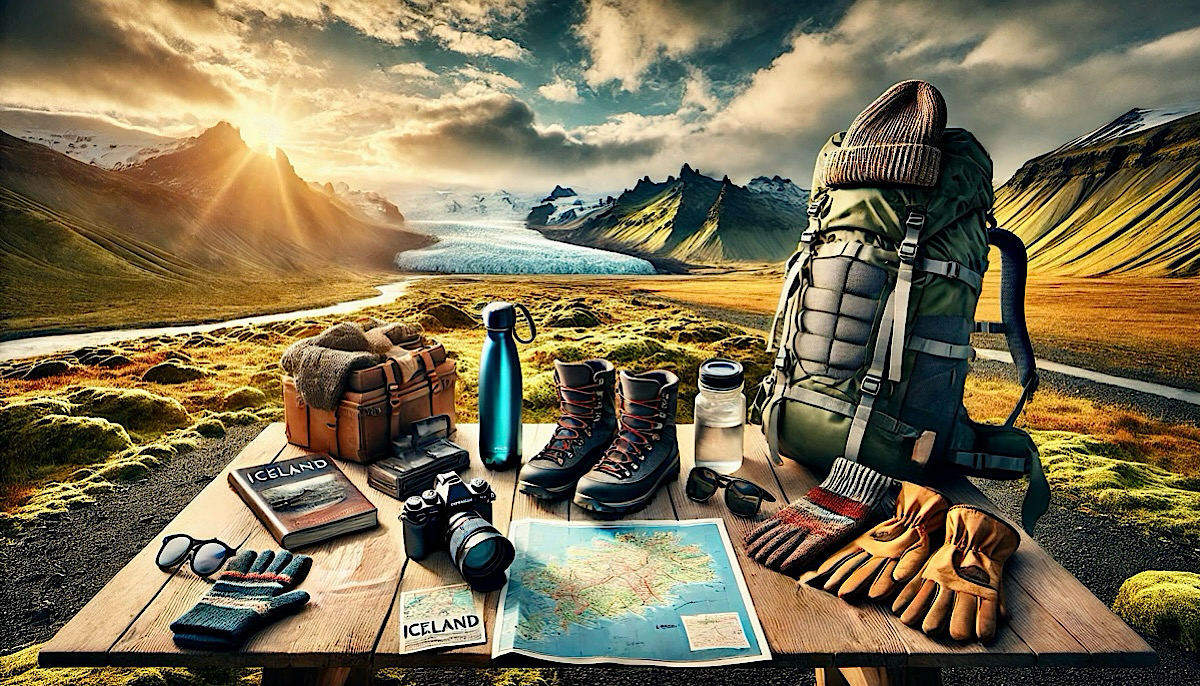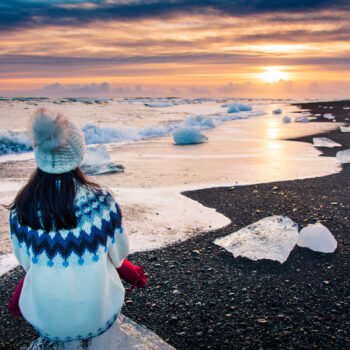Packing for a trip to Iceland is more than just tossing a few items into your suitcase—it’s about being prepared for an adventure in one of Earth’s most unpredictable and breathtaking destinations. Iceland is known for its dramatic weather, where you might experience four seasons in a day, and staying comfortable requires the right gear.
Unlike other destinations, Iceland is not like anywhere else. Shopping for last-minute items can be tricky, especially outside of Reykjavík or Akureyri. You’ll want to pack everything you need before leaving, as finding specific items in rural Iceland can be challenging.
Below, you’ll find everything you need to pack for Iceland, including tips for different seasons, essential gear, and what not to bring. Let’s make sure you’re ready for your Iceland trip!
WEATHER IN ICELAND: WHAT TO EXPECT YEAR-ROUN
Iceland’s unique location in the North Atlantic makes its weather as fascinating as its landscapes. Despite its northern latitude, Iceland experiences surprisingly temperate conditions thanks to the Gulf Stream and the North Atlantic Current. These warm ocean currents help moderate the climate, ensuring that Iceland isn’t as frigid as other places near the Arctic Circle. However, the weather here is famously unpredictable—you might encounter sunshine, rain, and wind all in a few hours!
SPRING IN ICELAND (MARCH TO MAY)
Spring in Iceland brings milder temperatures, ranging from 32°F to 54°F (0°C to 12°C), as snow melts and rivers swell. The landscapes come alive, making this a popular season for travelers eager to witness Iceland’s waterfalls at their most powerful.

However, this can also pose challenges. As winter snow and ice in the Highlands melt, river levels can rise rapidly, sometimes causing localized flooding. These conditions can make access to certain areas difficult, especially in more remote regions. It’s also worth noting that March often brings waves of winter weather. The shifting seasons mean it’s not uncommon to experience snowstorms or icy conditions even as spring begins.
SUMMER IN ICELAND (JUNE TO AUGUST)
Summer in Iceland brings the warmest temperatures of the year, ranging from 50°F to 72°F (10°C to 22°C). This is the season of the midnight sun, where daylight lasts nearly 24 hours, providing endless opportunities for exploration. The landscapes are at their most vibrant, with lush greenery carpeting the hills and valleys, and wildflowers blooming across the countryside.

While the weather is milder and more stable than other seasons, sudden rain showers and occasional windy conditions remain common. The long daylight hours give you ample time to soak in Iceland’s natural beauty—from its verdant meadows to its majestic waterfalls glistening under the summer sun.
FALL IN ICELAND (SEPTEMBER TO NOVEMBER)
As fall sets in, temperatures begin to drop, ranging from 32°F to 46°F (0°C to 8°C). The landscapes are painted with vibrant shades of red, orange, and yellow, offering stunning photo opportunities. This season also marks the return of longer nights, providing an excellent chance to catch a glimpse of the mesmerizing Northern Lights.
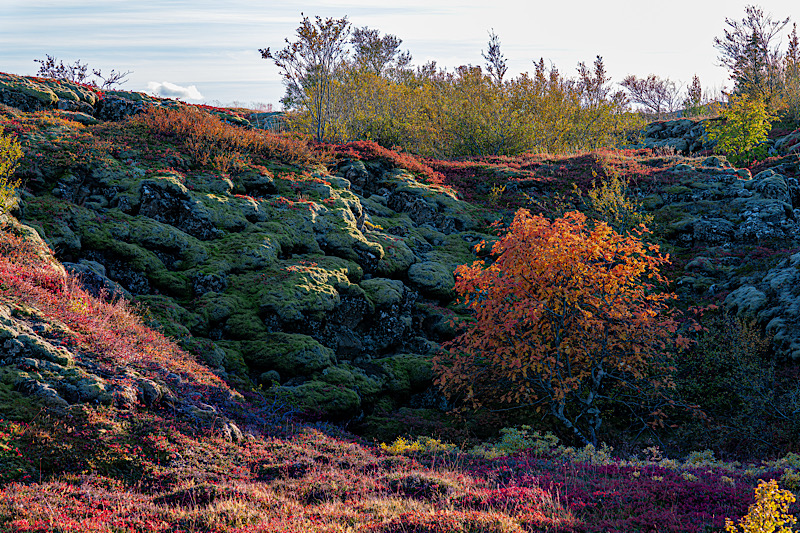
However, fall in Iceland presents its challenges. Weather warnings become more frequent, with intense storms and powerful winds sweeping across the country. Sudden shifts in weather, including sporadic snowstorms, are common, particularly in late autumn, leading to hazardous driving conditions and temporary road closures. Travelers should stay updated on weather forecasts and follow safety advisories to ensure a safe and enjoyable trip.
WINTER IN ICELAND (DECEMBER TO FEBRUARY)
Winter in Iceland brings colder temperatures, ranging from -3°F to 48°F (-16°C to 9°C), accompanied by icy winds and shorter days. This season is perfect for glacier hikes, exploring mesmerizing ice caves, and witnessing the Northern Lights dance across the night sky. Thanks to the moderating effects of the Gulf Stream, Icelandic winters are not as bitterly cold as other Arctic regions, making them more approachable for travelers.

However, in recent decades, climate change has introduced occasional warm spells during the winter, causing thaws that can disrupt the usual icy conditions. Like fall, winter is also marked by storms, stronger winds, and frequent weather alerts. Travelers should be prepared for rapidly changing conditions, as stormy weather can lead to disruptions and temporary road closures. Staying updated with weather forecasts and packing accordingly is essential for making the most of Iceland’s magical winter landscapes.
PACK FOR ICELAND
Packing for Iceland requires preparation for a destination where nature reigns supreme and the weather can change in an instant. When preparing for your Iceland adventure, it’s essential to consider the season, the activities you’ll be doing, and Iceland’s unpredictable weather.
Iceland’s unique climate—whether you’re experiencing the sunny summer months or the stormy winter season—demands packing essentials that will keep you comfortable and well-prepared.
From lightweight layers and waterproof gear for summer exploration to thermal clothing and sturdy boots for winter hikes, each season calls for specific items. Below, you’ll find detailed packing lists tailored for both summer and winter in Iceland, along with must-have accessories for any time of the year.
SUMMER PACKING LIST
With milder temperatures and extended daylight, Iceland has relatively user-friendly weather in the summer. Here’s what to pack for a summer trip to Iceland:
LIGHT LAYERS
Icelandic summer weather can vary throughout the day. T-shirts, long sleeves, and leggings are perfect for layering, allowing you to adjust your outfit depending on the temperature. Choose moisture-wicking materials to stay dry during hikes or sudden rain showers.
FLEECE SWEATER
A fleece sweater is a must-have item for your trip to Iceland, no matter the season. It provides warmth without adding bulk and works perfectly as a mid-layer under your waterproof jacket or winter coat. Lightweight, breathable, and quick-drying, fleece is ideal for outdoor adventures like hiking waterfalls or exploring glaciers.
Even during the summer, chilly mornings and evenings are common, making a fleece sweater indispensable. For travelers joining my tours, I always recommend packing one—it’s the perfect companion for Iceland’s unpredictable weather.

SOCKS
Don’t forget to pack plenty of moisture-wicking socks. In summer, your feet will need breathable socks that keep you dry and comfortable during your hikes. Look for socks designed to wick away moisture, as Iceland’s varied terrain can often involve wet conditions.
TREKKING PANTS
For summer Iceland trip, choose lightweight, breathable trekking pants that offer protection from the elements without causing overheating. Such pants are perfect for Iceland’s unpredictable weather, where you might encounter rain, wind, or intense sunshine all in one day. They’ll also keep your legs safe from brush and insects while exploring the stunning Icelandic wilderness.

It’s worth noting that ponchos are not suitable for Iceland’s windy conditions—they’ll likely cause more frustration than protection. For my travel companions, I provide high-quality waterproof gear as part of the experience—at no extra cost—so you can explore comfortably without worrying about packing every last item.
COMFORTABLE WATERPROOF HIKING BOOTS
When exploring Iceland’s rugged terrain, comfortable, waterproof hiking boots are essential. Choose a pair that offers solid support, protects your feet from water, and provides grip on slippery surfaces. It’s important to break them in before your trip to avoid blisters. Pair them with moisture-wicking wool socks to maximize comfort and keep your feet dry during long hikes in Iceland’s ever-changing weather.

SLEEP MASK AND EARPLUGS
With Iceland’s midnight sun, where daylight stretches for nearly 24 hours, it can be tough to distinguish between day and night. A sleep mask will help block out the light when you need to rest, especially if you’re camping or staying in areas with constant daylight. Adding earplugs can also be a game changer, as you might find yourself trying to sleep while others are still awake and socializing around you. Both are essentials for a good night’s sleep during Iceland’s summer!
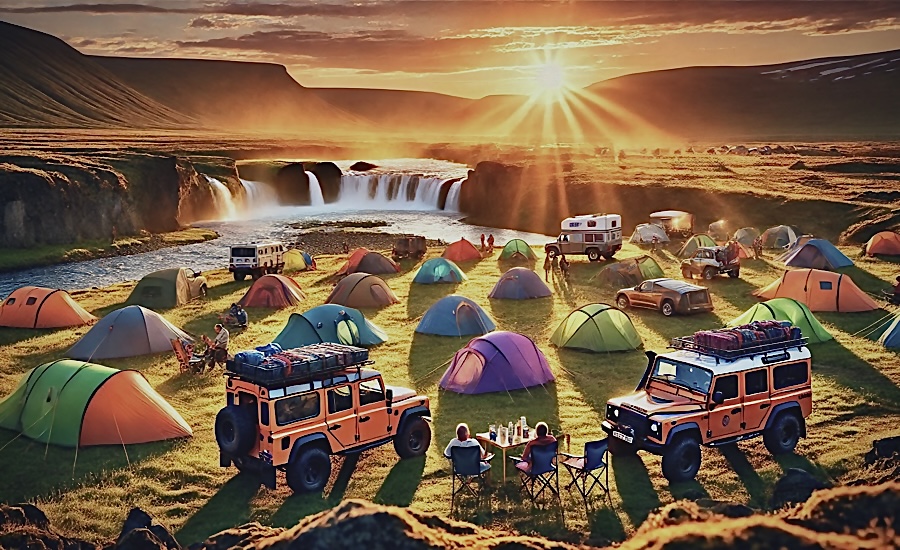
WINTER PACKING LIST
With colder temperatures and shorter days, winter requires thorough preparation to ensure you stay warm and comfortable during your Icelandic adventure:
THERMAL UNDEARWEAR
Thermal base layers are your first line of defense against Iceland’s cold temperatures. Made from merino wool or synthetic materials, these layers are essential for staying warm and dry. They work by trapping heat close to your body while wicking moisture away from your skin, ensuring you stay comfortable during outdoor activities, whether it’s hiking in the summer or exploring glaciers in winter. A good thermal base layer helps you maintain body heat while still being breathable, which is crucial for Iceland’s ever-changing weather conditions.

SOCKS
Wool socks are a must for keeping feet warm in freezing conditions. Opt for a few pairs to ensure comfort throughout your trip, especially if you’re doing a lot of walking or hiking.
TREKKING PANTS
For winter hikes in Iceland, it’s important to have waterproof and breathable trekking pants that will keep you dry and protected from the elements. Such pants are designed to withstand snow, wind, and icy conditions, common in Iceland’s rugged winter landscapes. Look for pants with insulation to provide extra warmth on colder days, while still allowing flexibility and comfort for hikes on rugged trails or glacier explorations. A good pair of trekking pants will help ensure you’re prepared for any adventure Iceland throws your way.

FLEECE SWEATER
A fleece sweater is an excellent layering choice to keep you warm and comfortable during Iceland’s unpredictable weather. Unlike wool, fleece is lightweight, breathable, and provides great insulation without feeling bulky. It’s perfect for wearing under a jacket on colder days or as a standalone piece during milder winter temperatures. Fleece also dries quickly, which is especially useful in Iceland’s variable conditions, ensuring you’re never left damp for long.

INSULATED, WATER-RESISTANT WINTER JACKET
An insulated, water-resistant winter jacket is a must-have to protect you from Iceland’s cold temperatures and harsh winds. Opt for a jacket with a hood and solid insulation to lock in warmth while keeping you dry in snow or rain. Look for features such as adjustable cuffs and a high collar to seal out the chill. This jacket will be your primary defense against Iceland’s winter elements, ensuring you stay warm and comfortable while exploring the stunning Icelandic landscapes.
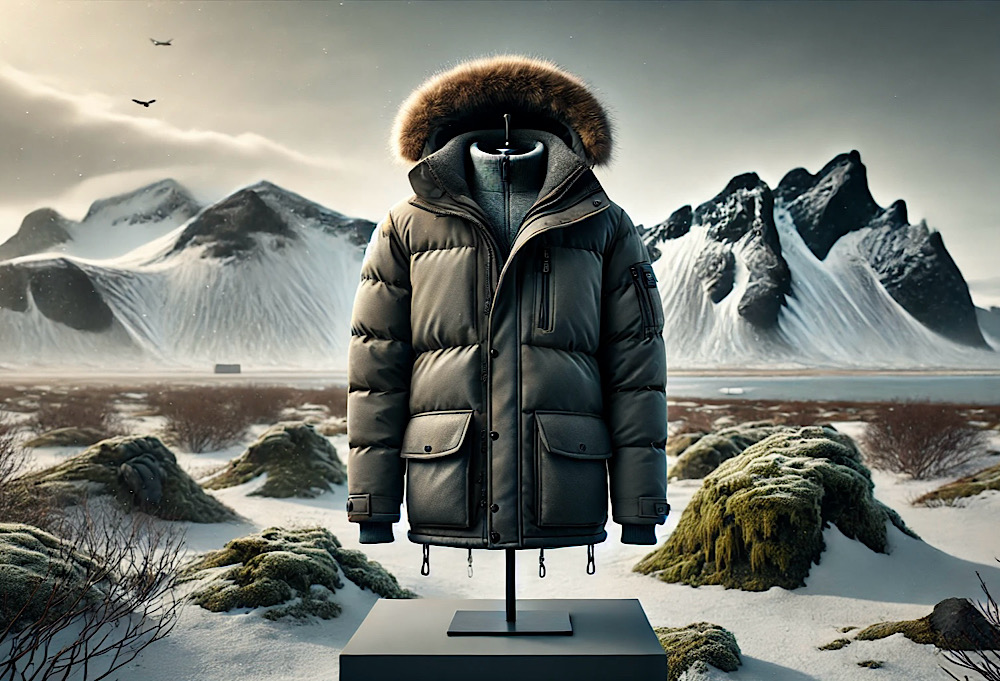
WARM HAT, SCARF, AND GLOVES
To stay warm in freezing conditions, it’s essential to protect your extremities with a wool—or fleece-lined hat, a thick scarf, and waterproof gloves. These items are crucial for keeping your body temperature regulated while exploring Iceland’s cold, windy environments. The combination of these accessories will help trap heat and shield you from the harsh elements, ensuring comfort even in the most extreme conditions.

STURDY WINTER BOOTS
Look for boots that are insulated, waterproof, and designed to offer excellent traction for navigating icy paths and snow-covered trails. A solid pair of winter boots will ensure your feet stay warm, dry, and comfortable while you explore glaciers, ice caves, or any winter adventure Iceland has to offer. Make sure they are durable enough for long days of hiking or walking and that you break them in before your trip to avoid blisters.

CRAMPONS
Crampons are an essential piece of gear for winter adventures in Iceland. These metal spikes attach to your boots, providing extra grip and safety on icy paths and slippery surfaces. Lightweight and easy to use, they’re designed to help you navigate frozen terrain with ease. Perfect for walking safely on icy paths, near waterfalls, or hiking trails during colder months, crampons help you stay steady and avoid slips, offering peace of mind when exploring Iceland’s stunning yet sometimes treacherous winter landscapes.
HAND AND FOOT WARMERS
Disposable or rechargeable warmers will definitely come in handy. They can be tucked into gloves or boots for extra heat during long outdoor activities, especially for children who may get cold more quickly. These warmers are a simple and effective way to ensure everyone stays comfortable during Iceland’s chilly days. While you can find them in Iceland, they’re often much more affordable if purchased outside the country.
ALL SEASON PACKING ESSENTIALS
When packing for Iceland, it’s essential to remember that some items are necessary no matter the season. Whether you’re visiting in the summer or winter, these all-season essentials will keep you prepared for the ever-changing weather. From waterproof gear to sun protection and versatile accessories, having these items on hand will ensure you’re comfortable while exploring Iceland’s stunning landscapes year-round.
RAIN GEAR
Iceland’s weather is unpredictable year-round, so packing quality rain gear is essential. A waterproof jacket and rain pants are must-haves, whether you’re facing sunny days or sudden downpours. Even in winter, Iceland’s conditions can shift from snow to rain quickly, so being prepared for all types of weather is crucial, especially when exploring waterfalls or hiking icy trails.

LIGHTWEIGHT BACKPACK FOR DAY TRIPS
A water-resistant backpack is perfect for carrying items like snacks, a water bottle, camera, and extra layers while exploring.
Whether you’re hiking through Iceland’s rugged landscapes or embarking on a scenic excursion, a lightweight, durable backpack will keep your belongings secure and easy to access.
To ensure everything stays dry in case of unexpected rain, look for a backpack with a waterproof cover or a built-in waterproof layer for extra protection.
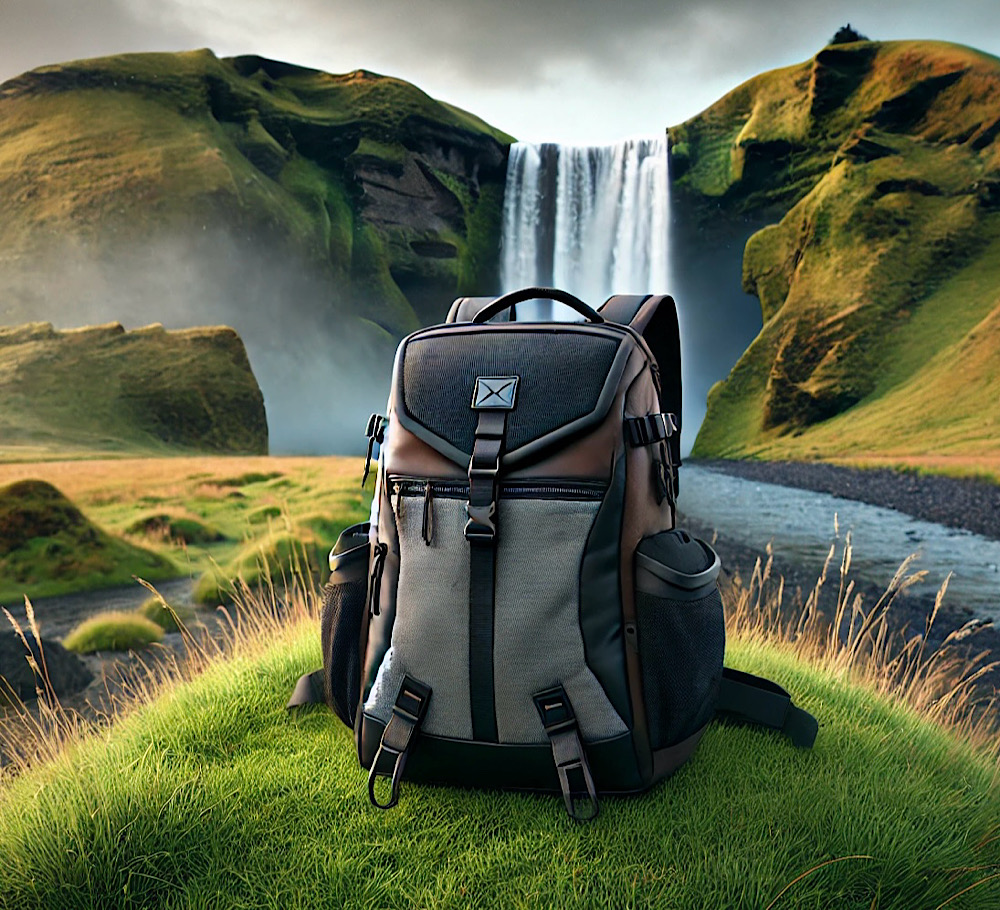
SUNGLASSES
If you are lucky enough to have sunny weather during your visit, polarized sunglasses are a must-have piece of equipment. They are especially essential for drivers and will be useful during all types of activities in Iceland.
SUNSCREEN & EYE DROPS
The sun can be intense in Iceland, especially in the summer. The UV rays are stronger due to Iceland’s proximity to the Arctic Circle and the reflection off glaciers and snow. Be sure to pack sunscreen to protect your skin during outdoor activities, especially when exploring glaciers or relaxing in hot springs.
Additionally, eye drops can be a lifesaver, especially during windy days or when you’re exposed to the sun for extended periods. The harsh winds and dry air can irritate your eyes, so having eye drops on hand will keep them refreshed and comfortable throughout your adventure.
BUFF NECKWEAR
A Buff is an incredibly versatile piece of neckwear perfect for Iceland’s unpredictable climate. Whether you use it as a scarf, face mask, headband, or hat, a Buff will keep you warm on cold, windy days. Its breathable fabric makes it ideal for all seasons.
LIGHTWEIGHT WATERPROOF GLOVES
Lightweight waterproof gloves are essential all year round in Iceland. Even during the summer months, the icy spray from waterfalls and the chilling winds near rivers and the coastline can make your hands uncomfortably cold.
These gloves act as a protective barrier against both moisture and wind, while still allowing you to maintain your grip—whether you’re holding hiking poles or snapping photos. When exploring areas with ice-cold water, such as close encounters with Skógafoss or Seljalandsfoss, these gloves will keep your hands dry and warm, ensuring comfort during your adventure.
SWIMSUIT
Packing a swimsuit for your trip to Iceland is more important than it seems. Iceland is home to numerous geothermal hot springs and outdoor pools, all integral to local culture. Whether you’re visiting the famous Blue Lagoon, soaking in the Secret Lagoon, or discovering lesser-known spots like Reykjadalur, a swimsuit ensures you’re ready to dive into Iceland’s unique bathing culture.

Beyond the famous hot springs, almost every town in Iceland has a public geothermal pool equipped with hot tubs, steam baths, and often water slides. Visiting these pools isn’t just a way to unwind; it’s a cultural experience where locals gather to socialize, regardless of the weather.
To learn more about Iceland’s unique pool culture and discover the best pools to visit, check out the detailed guide in my blog: “ULTIMATE GUIDE TO CULTURE OF PUBLIC SWIMMING POOLS IN ICELAND.”
REUSABLE WATER BOTTLE
Iceland is known for its clean and pure water, with natural springs and glaciers providing some of the freshest drinking water in the world. This makes carrying a reusable water bottle an absolute must for your trip. Not only will you stay hydrated while exploring Iceland’s stunning landscapes, but you’ll also be able to refill your bottle almost anywhere, including in Reykjavík and many rural locations. Icelandic tap water is of the highest quality and completely safe to drink, so there’s no need to buy bottled water—just refill your bottle and enjoy the natural goodness. Plus, using a reusable bottle helps reduce plastic waste, which is important for preserving Iceland’s pristine environment.
PHOTOGRAPHY GEAR
Iceland is a photographer’s paradise, with breathtaking landscapes that deserve to be captured. From the Northern Lights to majestic waterfalls and glaciers, having the right gear is essential for preserving your memories. Below, you’ll find key photography items that will help you make the most of your Iceland adventure.

CAMERA AND LENSES
For capturing Iceland’s incredible landscapes, a wide-angle lens (14-24mm) is ideal to capture the vastness of the scenery. If you’re looking to zoom in on wildlife or distant details, a telephoto lens (70-200mm) is a great choice. Both lenses will help you capture Iceland’s natural beauty in all its glory, whether you’re photographing the Northern Lights or the stunning glaciers.
EXTRA BATTERIES AND MEMORY CARDS
When traveling through Iceland, your camera will likely be in constant use. Cold weather can quickly drain your camera’s battery, so carrying extra batteries is crucial to ensure you don’t miss a moment of Iceland’s beauty. Additionally, make sure to pack extra memory cards, as Iceland offers endless photo opportunities, and you’ll want plenty of storage to capture all your memories without worrying about running out of space.
TRIPOD
Make sure to pack a sturdy tripod for those long exposure shots, especially if you’re chasing the Northern Lights or shooting waterfalls.
Pro Tip: If you need any last-minute photography gear while in Iceland, I highly recommend stopping by Reykjavik Foto. It’s my go-to photography shop, offering a great selection of high-quality equipment and accessories. The knowledgeable staff is always ready to help, making it a reliable spot to ensure you’re fully prepared to capture the Northern Lights.
CONCLUSION
Packing for your trip to Iceland is all about being prepared for a country where nature rules and the weather changes almost every day. Whether you’re going during the chilly winter months or the milder summer season, an Iceland packing list will help ensure you’re ready for the unexpected. From essential clothing layers to sturdy hiking boots and from waterproof jackets to your trusty luggage, having the right items will make all the difference during your Iceland adventure.
Iceland is one of the most unique destinations in the world, and with the right packing list, you’re sure to make the most of every moment. So, take the time to pack well, check the weather before you go, and get ready for an unforgettable experience in this stunning and unpredictable country.
